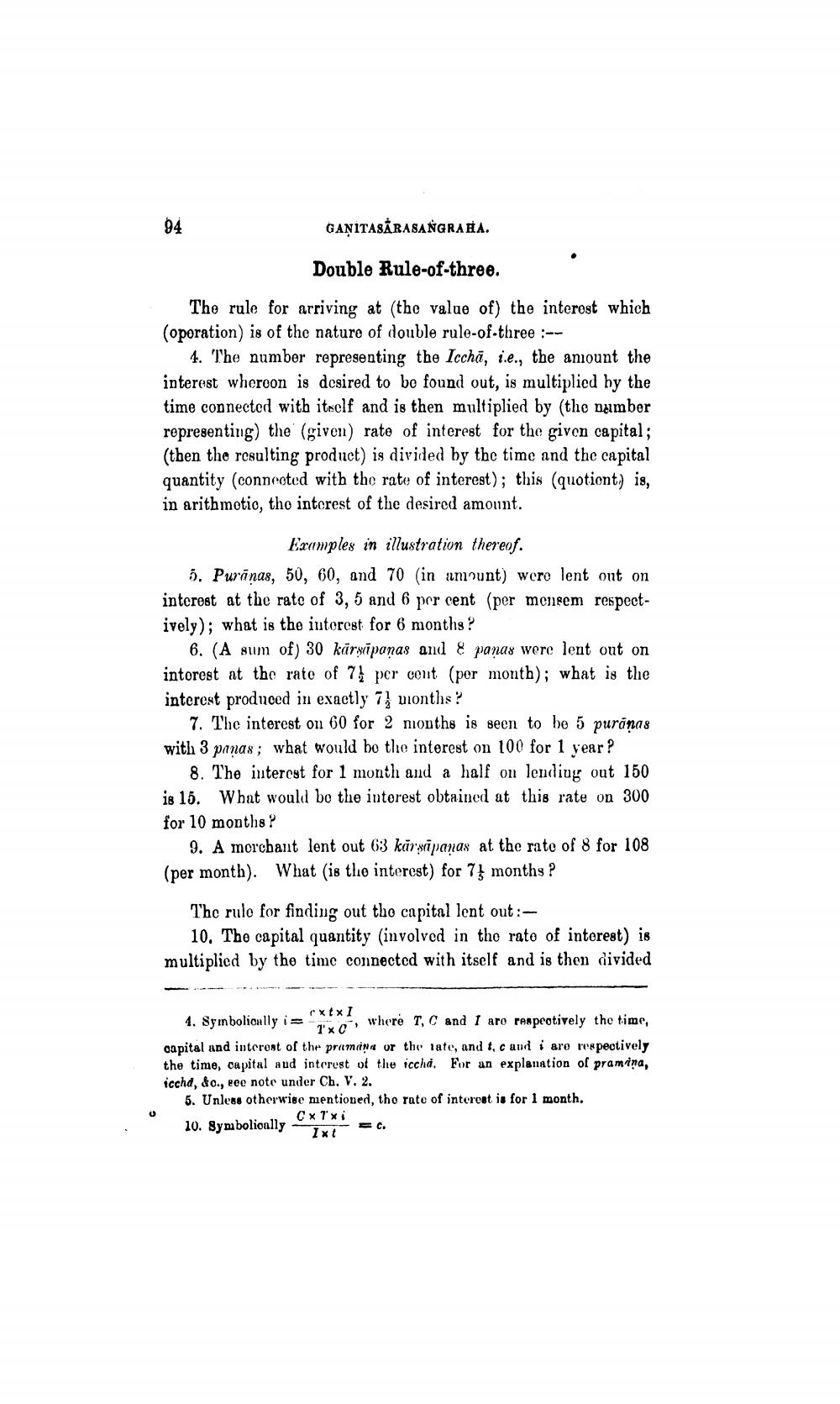________________
GAŅITASĀRASANGRAFA.
Double Rule-of-three.
The rule for arriving at the value of) the interest which (Oporation) is of the nature of double rule-of-three :--
4. The number representing the Icchă, i.e., the amount the interest wheroon is desired to be found out, is multiplied by the time connected with itself and is then multiplied by the number representing) the (given) rate of interest for the given capital; (then the resulting product) is divided by the time and the capital quantity (connected with the rate of interest); this (quotient) is, in arithmetio, the interest of the desired amount.
Examples in illustration thereof. 5. Purānas, 50, 60, and 70 (in amount) wero lent out on interest at the rate of 3, 5 and 6 per cent (per menfem respectively); what is the interest for 6 months ?
6. (A sum of) 30 kārsīponas and & panas were lent out on intorest at the rate of 74 per cent (per month); what is the interest produced in exactly 7 vonths?
7. The interest on 60 for 2 months is seen to be 5 purānas with 3 panas; what would be the interest on 100 for 1 year?
8. The interest for 1 month and a half on lending out 150 is 15. What would be the interest obtained at this rate on 300 for 10 months ?
9. A mercbant lent out 63 kårsrīpanas at the rate of 8 for 108 (per month). What is the interest) for 7 months ?
The rulo for finding out the capital lent out:
10. The capital quantity (involved in the rate of interest) is multiplied by the time connected with itself and is then divided
4. Symbolically i where T, C and 1 aro respeotively the time, capital and interest of the proming or the late, and t, cand i are respectively the time, capital aud interest of the iccha. For un explanation of pramana, icchd, &c., eee note under Ch. V. 2. 5. Unless otherwise mentioned, the rate of interest is for 1 month.
CxTxi 10. Syn bolionlly a
Ixc.




